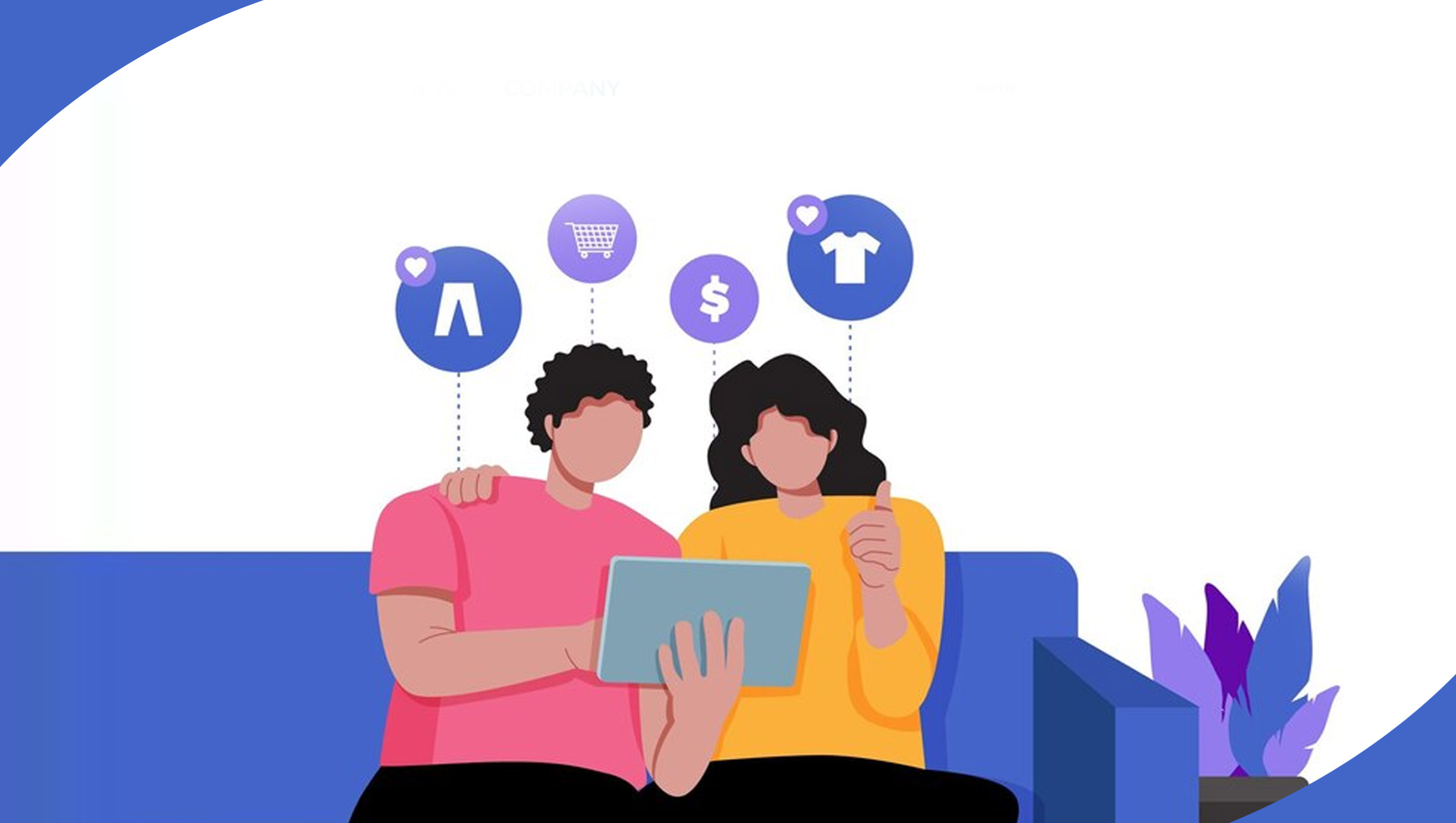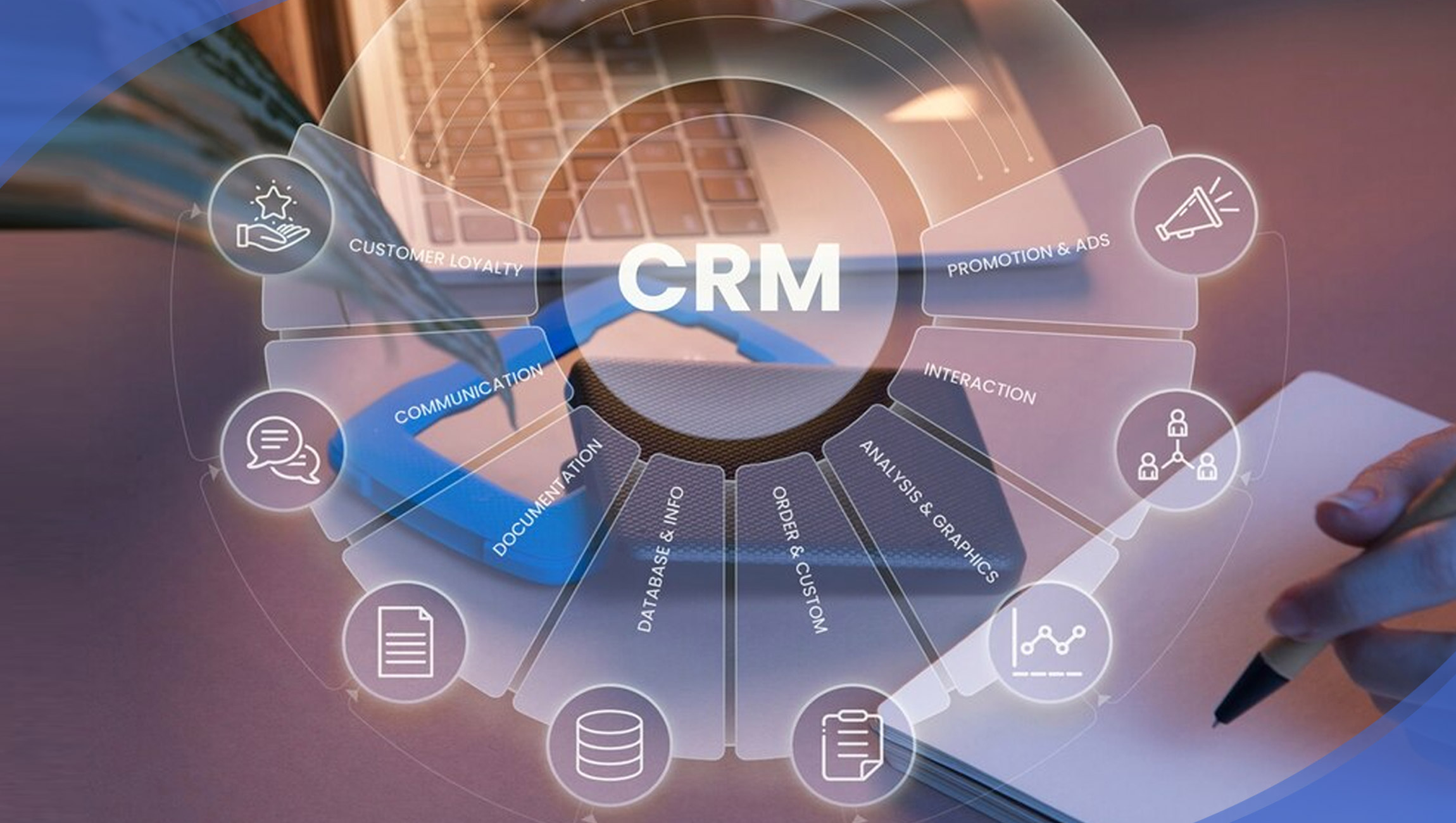Consumer buying psychology is the study of how individuals’ thoughts, feelings, and perceptions influence their purchasing decisions. Businesses can utilize this understanding to develop strategies that influence and guide customer behavior, ultimately increasing sales and brand loyalty.
Here’s how understanding consumer buying psychology benefits businesses:
1. Improved Marketing and Advertising:
By understanding consumer motivations and preferences, businesses can create targeted marketing campaigns that resonate with their audience. This includes crafting compelling messaging, using relevant visuals, and choosing the right channels to reach the target audience.
Understanding factors like scarcity, social proof, and emotional triggers can be used to create persuasive marketing messages and advertisements.
2. Enhanced Product Development and Pricing Strategies:
Knowledge of consumer needs and desires can guide the development of products that address specific pain points and offer perceived value.
Understanding price sensitivity can help businesses set competitive and profitable prices for their products or services.
3. Personalized customer experiences:
By analyzing purchase history, browsing behavior, and other customer data, businesses can personalize the customer experience and offer targeted recommendations, promotions, and content. This fosters a sense of individualized attention and strengthens customer engagement.
4. Building brand loyalty:
By understanding how consumers form emotional connections with brands, businesses can develop strategies to build trust and loyalty. This can involve providing exceptional customer service, creating meaningful brand experiences, and engaging with customers on a deeper level.
5. Identifying Market Trends and Opportunities:
Studying consumer behavior allows businesses to identify emerging trends and anticipate future customer needs. This enables them to adapt their offerings, marketing strategies, and overall business approach to stay ahead of the competition.
By leveraging insights from consumer buying psychology, businesses can gain a competitive edge in the marketplace. However, it’s crucial to remember that ethical practices are essential. Building trust and respecting customer privacy are vital components of any successful business strategy.
Understand the types of Consumers:
Consumer buying psychology majorly classifies consumers into 5 special categories: discount seekers, wandering customers, impulse buyers, needs-based shoppers, and loyal customers.
-
Discount Seekers:
These individuals actively seek out discounts and sales opportunities, deriving satisfaction from securing a good deal. Their purchasing decisions are primarily influenced by price rather than product quality.
-
Wandering Consumers:
Motivated by curiosity and a sense of adventure, exploratory customers enjoy browsing through various shopping avenues without a specific purchase in mind. They are open to spontaneous purchases and can easily be swayed by attractive deals or enticing products.
-
Needs-based Consumers:
Needs-based Customers approach shopping with clear intentions and specific objectives in mind. Whether driven by quality or affordability, they meticulously weigh their options to fulfill their requirements. Their determination to make a purchase increases their likelihood of completing transactions.
-
Loyal Consumer:
Loyal customers constitute a devoted segment that consistently prioritizes your brand for their purchases. While loyalty manifests in various forms, these customers exhibit unwavering support and preference for your products or services.
Efforts should be directed towards cultivating and nurturing customer loyalty, aiming to transform occasional buyers into steadfast advocates. Implementing customer retention strategies, such as loyalty programs, not only fosters repeat business but also encourages referrals and amplifies brand growth.
Also, do not forget about the difficult consumers:
Challenging customers are those who present unique obstacles and often demand additional attention from your customer support or success team.
Difficult customers can be tricky to handle for a few reasons. They might be unhappy with the service they received, get a faulty product, or just tend to be argumentative. It’s important to understand why they’re acting this way, so you can handle the situation better. There are different kinds of difficult customers that marketers might encounter:
-
Demanding Consumer
There’s a spectrum when it comes to customer anger—some have valid reasons, while others don’t.
The demanding or aggressive customer is the type who easily gets upset, acts rudely, and can be quite critical. They tend to believe that their needs are top priority and that you’re there solely to cater to them.
-
Dissatisfied Consumer
Encountering dissatisfied or consistently complaining customers is a frequent occurrence in retail e-commerce businesses.
The challenge with these individuals lies in their tendency to exaggerate their issues, making it more challenging to address their concerns satisfactorily.
-
Vague Consumer
The indecisive customer struggles to make a decision, while the vague customer lacks clarity about their preferences.
These customers often visit your store without a clear intention to buy anything. They are simply browsing, whether online or in person, which poses a challenge to serving their needs effectively.
-
Expert Consumer
It’s quite astonishing, but there are customers who believe they know more about your products than you do. Enter the know-it-all customer—they consider themselves authorities on your offerings.
Dealing with these individuals can be challenging because they dismiss your knowledge and expertise. They place themselves and their opinions above yours and those of your sales team.
While some customers may indeed have expertise in specific products, such as electronics or items they’ve used before, dealing with know-it-alls can be draining and frustrating.
-
Impatient Consumer
Have you ever encountered a customer who seems to want everything done in the blink of an eye? That’s the impatient customer, and they can be among the toughest and most challenging types to handle.
While we all have busy lives and want to get through our tasks efficiently, some customers seem to have a natural inclination towards impatience. When they express themselves, they may resort to frustration and, at times, even direct hostility towards you or your team.
Impatient customers are often more prevalent in offline stores, where face-to-face interactions occur. If they’re waiting in line, you might notice them sighing heavily or becoming visibly agitated, which can make other customers uncomfortable or even impatient themselves.
-
Entitled Consumer
Regardless of whether you operate a brick-and-mortar establishment, an online platform, or both and provide an omni-channel customer journey, you’re likely to encounter the entitled customer.
With the surge in e-commerce and the vast array of products available, entitled customers have become increasingly common today.
These individuals see themselves as superior to others, including your sales team and yourself as the store owner. They expect special treatment and behave as if they are the backbone of your business, believing that without them, your business would flounder.
Now that you’ve gained insight into your customer base, let’s explore how you can harness their purchasing psychology to drive business growth. E-commerce success hinges on comprehending consumer behavior and leveraging it to influence buying decisions.
Marketing Technology News: MarTech Interview with Dr. Aaron Andalman, Co-Founder and Chief Science Officer at Cognitiv
Here are several strategies to capitalize on consumer buying psychology and propel your business forward:
1. Triggering scarcity and urgency:
Limited-time offers: Create a sense of urgency with flash deals, countdown timers, and limited-quantity promotions. Highlight products with limited stock to encourage immediate purchases.
‘Best-selling’ or ‘trending’ labels: Showcase popular items to create the perception of high demand and social proof, encouraging customers to join the trend.
2. Building Trust and Credibility:
Display positive customer reviews and testimonials to build trust and social proof.
Showcase trust badges and security certifications to reassure customers about the legitimacy and security of your website.
Ensure clear and transparent policies (return, shipping, and privacy) to avoid purchase hesitation due to a lack of information.
3. Emphasizing Value and Benefits:
Go beyond features and focus on the benefits your product offers to the customer’s life.
Use clear and concise language to highlight the key benefits and features of your product.
Offer free trials or samples to allow customers to experience the product before committing to a purchase, reducing their perceived risk.
4. Utilizing Storytelling and Emotional Triggers:
Craft engaging product descriptions that tell a story and evoke emotions associated with your product.
Use high-quality visuals (images and videos) to showcase your product in action and create a positive emotional connection.
Leverage customer testimonials in video format to connect with customers on an emotional level and build trust.
5. Personalization and recommendation engines:
Recommend products based on browsing history, purchase history, and other customer data to personalize the shopping experience.
Use retargeting ads to remind customers about products they viewed or abandoned carts, increasing the likelihood of a purchase.
Segment your email list and send targeted marketing campaigns based on individual customer preferences and interests.
6. Offering a Frictionless User Experience:
Make the checkout process simple and efficient to avoid cart abandonment.
Offer multiple payment options to cater to different customer preferences and increase purchase completion rates.
Ensure your website is mobile-friendly to cater to the growing trend of mobile shopping.
7. Social Proof:
Social proof is a natural inclination among humans to mimic the actions of others and follow their decisions.
Testimonials and reviews serve as prime examples of social proof. When customers come across positive feedback, they feel encouraged to purchase a product because others have already done so and found it beneficial. It’s akin to receiving a personal recommendation.
Embedded within consumer and shopper psychology, social proof is a strategic tool utilized by businesses to attract additional prospects, enhance website traffic, and increase conversions. By incorporating social proof, businesses bolster their reputation as reliable and trustworthy entities in the eyes of consumers.
8. Unity
Incorporating a sense of unity taps into a fundamental human need for belonging, which is vital for psychological well-being and is positioned just below safety in Maslow’s hierarchy of needs.
Marketers leverage this innate desire for unity by crafting compelling messaging that fosters a sense of community among customers. By employing carefully chosen language, marketers create a feeling of belongingness, fulfilling customers’ need to be part of a collective.
For instance, phrases like ‘Join 100k data enthusiasts’ or ‘Be a member of a 30K club of marketing professionals’ evoke a sense of unity and belongingness that resonates with customers.
Moreover, employing segmentation in marketing efforts, particularly in advertisements, enables marketers to group like-minded individuals together, thereby enhancing the effectiveness of their campaigns and driving higher conversion rates.
The efficacy of unity as a shopping psychology tactic is further underscored by the tangible benefits it offers in terms of revenue growth and customer retention. When complemented with exceptional customer support, leveraging unity can cultivate a loyal customer base.
Creating Convenience for E-Commerce Customers:
As an e-commerce enterprise, it’s imperative to craft an unparalleled experience of convenience for your potential clientele. This is probably the first step towards leveraging consumer buying psychology. This not only encourages initial purchases but also fosters repeat patronage. It’s essential to scrutinize every facet of your sales journey, encompassing website layout, order processing, and supply chain logistics. By meticulously analyzing and optimizing each element, you can elevate customer satisfaction and loyalty, ultimately driving sustained success for your business.
Ensuring Cross-Device Compatibility
When designing your e-commerce platform, prioritizing mobile optimization is paramount, given that a significant portion of online shoppers utilize their smartphones for transactions. Regardless of the desktop website’s quality, a poor mobile user experience can significantly deter potential customers.
Streamlined Navigation
Your website should offer intuitive navigation, particularly on mobile devices, with easily accessible buttons and a minimized number of steps from product selection to checkout. Engaging a test group to provide feedback on your e-commerce site prior to its official launch can help fine-tune the user experience, ensuring seamless interactions and maximizing customer satisfaction with your online store.
Enhancing the supply chain experience
In addition to optimizing convenience for customers, e-commerce enterprises must also focus on refining their supply chain processes. This entails a comprehensive evaluation of every facet of the business, spanning from product creation to shipping and delivery.
Production Efficiency
For businesses dealing with specialized items that require time for creation, transparency is key. Clearly communicate estimated shipping times to customers before they make a purchase. When selecting manufacturers, prioritize factors such as cost-effectiveness, product quality, and production speed. Faster production cycles enable quicker delivery of products to customers, enhancing overall satisfaction.
Shipping Logistics
The shipping phase is equally critical. Prolonged shipping durations may lead to customer anxiety regarding lost packages. Therefore, it’s essential to collaborate with reputable shipping companies known for swift and reliable delivery services. Opt for carriers equipped with tracking systems, as they provide customers with the convenience of monitoring their orders’ progress, thereby alleviating concerns about order status and ensuring a seamless delivery experience.
This is not the end of the story
In consumer buying psychology, pricing and customer service are key determinants of purchasing decisions and satisfaction. Pricing directly influences perceived value and affordability, while effective customer service builds trust and loyalty. Strategic pricing strategies, like discounts, create urgency and perceived value, while transparent pricing fosters trust. Exceptional customer service, such as personalized assistance, encourages repeat business, while poor service can lead to dissatisfaction and loss of customers. Businesses that prioritize customer service invest in training and feedback mechanisms to enhance the overall experience and drive long-term success.
Marketing Technology News: 2024: The Year of AI Investments
Exploring the Influence of Pricing Strategies on Consumer Behavior
In the realm of e-commerce, pricing strategies wield considerable influence over consumer behavior. For instance, implementing discounts or promotional offers often serves as a catalyst for driving purchase decisions among consumers. Conversely, overpricing a product may deter potential buyers from completing a transaction.
Dynamic pricing emerges as another potent strategy employed by e-commerce retailers. This approach involves real-time price adjustments in response to fluctuations in supply and demand dynamics. Leveraging advanced data analytics, e-commerce platforms can closely monitor consumer actions and swiftly adapt pricing strategies to align with market trends. This dynamic approach not only bolsters profit margins but also stimulates consumer engagement and fosters a propensity for purchasing.
It’s crucial to avoid under-pricing your products, as this can pose challenges when running promotions, especially if it results in selling at a loss. Once a standard price is established, adjusting it upward can be challenging as consumers develop expectations regarding the product’s value.
Opting to price your product slightly above your desired profit margin and then introducing it as a “sale” can stimulate increased business while still achieving your desired profit margin. The perception of obtaining a discounted value, rather than the actual sale price, is what matters most to consumers.
For high-quality or scarce products, charging a premium is feasible, but it’s essential to gauge the customer’s willingness to pay. In the case of handmade products, pricing too low may lead to overwhelming demand that exceeds production capacity. In such scenarios, pricing higher for fewer orders can help manage workloads and maintain product quality.
Highlighting the Significance of Customer Service in E-Commerce Brands
It’s often said that retaining existing customers is more challenging than acquiring new ones, emphasizing the critical role of building brand loyalty for long-term success in e-commerce. Achieving this entails understanding consumer psychology and fostering personalized interactions that cultivate trust and loyalty. Additionally, aligning your brand with a social cause and actively contributing to it can enhance brand perception and resonate with your customers’ values. However, paramount to shaping the customer’s perception of your brand is the handling of customer service. Effective customer service involves promptly addressing issues related to products or shipping processes, supported by clear protocols for handling common customer concerns. Simplifying the return process is essential, as a cumbersome procedure may deter future business and prompt customers to seek alternatives. Offering hassle-free returns, perhaps with added incentives, demonstrates a commitment to customer satisfaction, ultimately fostering stronger relationships and enhancing overall brand satisfaction.
Remember:
The future of online shopping and how people buy things is closely tied to new technology and what consumers like. More and more people are choosing to shop online, so stores have to keep changing and coming up with new ideas to meet their needs. As technology keeps evolving, it’s important for businesses to stay updated and make changes to keep up with how people shop online.
Ethical marketing practices are crucial. Always strive for transparency and avoid manipulative tactics that could damage customer trust and brand reputation. Continuously test and refine your approach. Consumer buying is constantly evolving, so be prepared to adapt your strategies based on data and customer feedback. Focus on building long-term customer relationships. By providing a positive shopping experience and exceeding expectations, you can foster customer loyalty and encourage repeat business.











